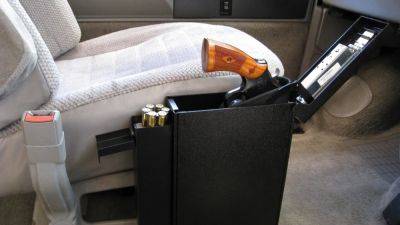Every New Car in America Will Have Automatic Emergency Braking by 2029
The Biden Administration has finalized a rule that mandates automatic emergency braking in all new vehicles by 2029. The compulsory rule will replace a voluntary agreement carmakers signed onto in 2016, which led to emergency braking systems becoming widely available on many new cars as part of their ADAS systems. According to the Department of Transportation, this agreement didn't go far enough to make emergency braking standard across all new vehicles, regardless of trim level or options for a given make and model.
The federal government now says automakers have five years to refine and develop the safety tech, as well as integrate automatic emergency braking on every new vehicle sold in the United States; NHTSA has set a compliance date of September 2029, per the New York Times. The measure is aimed at reducing deaths on public roads in the U.S., which reached an estimated 41,000 in 2023.
This latest automatic emergency braking (AEB) rule «imposes more stringent requirements» on the technology than what is currently available on many vehicles, and some automakers have claimed that it exceeds the limits of what is technologically feasible, the NYT reports. The new rule mandates that every new «light vehicle» must automatically apply its brakes to avoid collisions with another vehicle at speeds of up to 62 miles per hour. The system must also start to apply the brakes at speeds of up to 90 mph if an imminent collision is detected. The starting forward speed for when the system must kick on is 6 mph, effectively making the new speed range for mandatory AEB from 6-90 mph.
That speed applies to collisions with other vehicles, however, and the max speed at which AEB operates drops to 45 mph when the system detects a pedestrian, which the new rule aims to protect as well. The new standard maintains that AEB systems must also be capable of detecting pedestrians at night or other low light conditions. The changes are due to an increase in pedestrian deaths, which has come from a number of factors, including new vehicle design that makes cars with taller front ends deadly to pedestrians.
The changes to speeds at which AEB systems must now operate is meant to reduce







